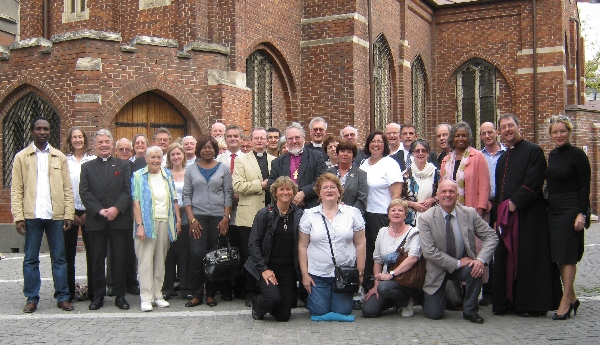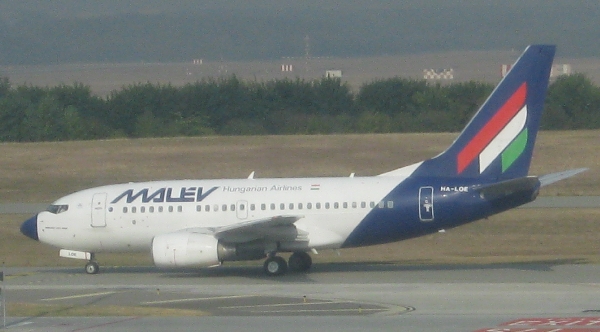
I spent a further 24 hours in Bucharest following our Archdeaconry Synod meeting, not least because flying back to Prague on Monday afternoon was far cheaper than flying back on Sunday evening! I used the time exploring the city centre by bus and on foot, and I hope that these photographs will give readers of my blog, some impression of what Bucharest is like.
Looking at the photograph on the left, it would be very easy to think that it was taken in Paris or another French city, rather than in Bucharest. And many of the most attractive buildings dating from the latter half of the nineteenth century and the early part of the twentieth century do display a French architectural style. This is because of the strong French-Romanian links during this time period with many French architects working in Romania and Romanian architects training at French architectural schools.
Below are three more examples of attractive buildings in the French architectural style all located within Central Bucharest. As can be seen, they have each been renovated in recent times after many years of neglect during the communist era.



The French influence even extends to a small version of Paris’ Arc de Triomphe. The Romanian version pictured below, celebrates the re-unification of the country in 1918 at the end of the First World War. Alongside the photograph of Bucharest’s ‘Triumphal Arch’, is a view along another city centre side street which once more illustrates the influence of French nineteenth century architecture. However, the photograph also shows more recent Czech influence with the Staropramen Beer logo featuring on the sun awning and sign of the street-side bar-restaurant!
|
|
However, as in Prague and the other capital cities of the former Warsaw Pact countries of Central and Eastern Europe, you cannot avoid seeing the impact of over forty years of Communist rule. Below is a photograph of Casa Presei Libere/Press House, a wonderful example of Stalinist-Baroque architecture, completed in 1956. During the period of Communist rule, all print media emanated from this building, hence it was always known informally as the ‘House of Lies’.

This building in the photograph below, is a large Communist era Conference Centre, built to facilitate the holding of Communist Party Congresses.

The Communist Party leader of Romania from March 1965 until he was overthrown in the revolution of December 1989, was Nicolae Ceausescu. Following a visit to North Korea in the early 1970s, Ceausescu embarked upon an extraordinary scheme to refashion an entire section of Bucharest according to his own megalomaniacal vision. As part of the scheme, about one sixth of the capital’s buildings were demolished, many of considerable historicity including thirteen Churches.
The pinnacle of Ceausescu’s scheme was the construction of the second-largest building in the world (after the Pentagon in Washington), now known as the Palace of Parliament. Started in 1984 but never completed, it has 12 storeys and 3100 rooms and covers an area of 330,000 square metres.

From the Palace of Parliament, a four kilometre-long boulevard was created, deliberately designed to be a few metres wider than the Champs–Élysées in Paris. All this was done to satisfy the egotistical whims of Ceausescu and his wife Elena, around whom was built a major personality cult.

Ceausescu was overthrown in the revolution of December 1989. Still under the delusion that he was popular with the Romanian people despite a revolt in the western city of Timisoara, Ceausescu tried to address the crowds from the balcony of the headquarters building of the Central Committee of the Communist Party on 21st December 1989. A few minutes into his speech, instead of cheers and applause, the crowd began to boo and heckle him. Unable to control the crowd, he withdrew from the balcony into the building.

The crowd outside was broken up by military force using live ammunition which resulted in the death of many of the protesters. The following day, Ceausescu tried again to address the crowds who had once more gathered outside the building. This time, they responded by throwing rocks and missiles and eventually broke into the building, forcing him, together with his wife Elena, to flee by helicopter from the roof. A couple of days later, the couple were arrested, put on trial for two hours before an Extraordinary Military Tribunal, given death sentences and then shot by a three man firing squad.

Fortunately, despite all that Ceausescu and his regime did to the city of Bucharest, many Orthodox Church buildings have survived. Here are two examples that I was briefly able to visit and photograph.


And finally, here is a third example which, as you can see, is currently undergoing restoration work. This Church belongs to a Romanian Orthodox Convent and where several of us had the privilege of listening to a small group of young nuns sing Vespers on the evening of Sunday 25th September.













